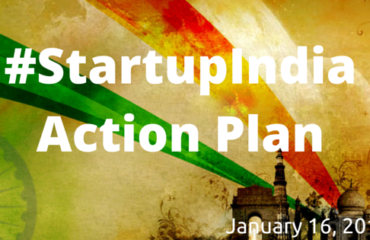Smart City Mission, decoded.

What is the Smart City Initiative?
The conceptualization of Smart City, varies from city to city and country to country, depending on the level of development, willingness to change and reform, resources and aspirations of the city residents.
What’s the Objective of behind the Smart City Program?
The objective is to promote cities that provide core infrastructure and give a decent quality of life to its citizens, a clean and sustainable environment and application of ‘Smart’ Solutions.
What are the developmental elements that a smart city would get?
The core infrastructure elements in a smart city would include:
i. adequate water supply.
ii. assured electricity supply.
iii. sanitation, including solid waste management.
iv. efficient urban mobility and public transport.
v. affordable housing, especially for the poor.
vi. robust IT connectivity and digitalization.
vii. good governance, especially e-Governance and citizen participation.
viii. sustainable environment.
ix. safety and security of citizens, particularly women, children and the elderly.
x. health and education.
What are criteria for eligibility for Smart City Program by Govt. of India?
- Increase over Census 2011 or Swachh Bharat baseline on number of household sanitary latrines (whichever is less).
- Making operable Online Grievance Redressal System with response being sent back to complainant.
- At-least first monthly e-newsletter published.
- Electronically place project-wise municipal budget expenditure information for the last two financial years on the website.
- Levy of compensatory penalty for delays in service delivery.
- Collection of internally generated revenue (e.g. taxes, fees, charges) during the last three FYs (2012-15).
- Payment of salaries by ULB up-to last month.
- Audit of accounts for FY 12-13.
- Percentage contribution of tax revenue, fees and user charges, rents and other internal revenue sources.
- Percentage of establishment and maintenance cost of water supply.
- Percentage contribution of internal revenue sources (self-generated) used for capital works during FY 2014-15.
- Percentage of City-level JnNURM Reforms achieved.
- Percentage of completion of Projects sanctioned upto March, 2012 under JnNURM.
What’s the strategy for efficient implementation of the Program?
The implementation of the Mission at the City level will be done by a Special Purpose Vehicle (SPV) created for the purpose. The SPV will plan, appraise, approve, release funds, implement, manage, operate, monitor and evaluate the Smart City development projects. Each smart city will have a SPV which will be headed by a full time CEO and have nominees of Central Government, State Government and ULB on its Board.
The States/ULBs shall ensure that,
(a) a dedicated and substantial revenue stream is made available to the SPV so as to make it self-sustainable and could evolve its own credit worthiness for raising additional resources from the market.
(b) Government contribution for Smart City is used only to create infrastructure that has public benefit outcomes. The execution of projects may be done through joint ventures, subsidiaries, public-private partnership (PPP), turnkey contracts, etc suitably dovetailed with revenue streams.
The SPV will be a limited company incorporated under the Companies Act, 2013 at the city-level, in which the State/UT and the ULB will be the promoters having 50:50 equity shareholding. The private sector or financial institutions could be considered for taking equity stake in the SPV, provided the shareholding pattern of 50:50 of the State/UT and the ULB is maintained and the State/UT and the ULB together have majority shareholding and control of the SPV. Funds provided by the Government of India in the Smart Cities Mission to the SPV will be in the form of tied grant and kept in a separate Grant Fund. These funds will be utilized only for the purposes for which the grants have been given and subject to the conditions laid down by the MoUD. The State Government and the ULB will determine the paid up capital requirements of the SPV commensurate with the size of the project, commercial financing required and the financing modalities. To enable the building up of the equity base of the SPV and to enable ULBs to contribute their share of the equity capital, GoI grants will be permitted to be utilized as ULBs share of equity capital in the SPV, subject to the conditions given in Annexure 5 of the guidelines. Initially, to ensure a minimum capital base for the SPV, the paid up capital of the SPV should be such that the ULB’s share is at least equal to Rs.100 crore with an option to increase it to the full amount of the first instalment of Funds provided by GoI (Rs.194 crore). With a matching equity contribution by State/ULB, the initial paid up capital of the SPV will thus be Rs. 200 crore (Rs. 100 crore of GoI contribution and Rs. 100 crore of State/UT share). Since the initial GoI contribution is Rs.194 crore, along with the matching contribution of the State Government, the initial paid up capital can go up to Rs.384 crore at the option of the SPV. The paid up capital may be enhanced in the subsequent years as per project requirements, with the provision mentioned above ensuring that ULB is enabled to match its shareholding in the SPV with that of the State/UT. The structure and functions of the SPV are given in Annexure 5 of the guidelines and the Articles of Association will contain such provisions. A model Article of Association is given in the Toolkit. After selection of the cities in Stage II of the Challenge, the process of implementation will start with the setting up of the SPV. As already stated, it is proposed to give complete flexibility to the SPV to implement and manage the smart city project and the State/ULB will undertake measures as detailed in Annexure 5 of the guidelines for this purpose. The SPV may appoint Project Management Consultants (PMC) for designing, developing, managing and implementing area-based projects. SPVs may take assistance from any of the empanelled consulting firms in the list prepared by MoUD and the handholding agencies. For procurement of goods and services, transparent and fair procedures as prescribed under the State/ULB financial rules may be followed. Model frameworks as developed by MoUD may also be used for Smart City projects.
Source: smartcities.gov.in
- Deciding upon a home run Business enterprise - March 5, 2016
- Make in India, Mumbai Event Report - February 16, 2016
- Marketing Trends of 2015 & Predictions for 2016 - February 15, 2016



